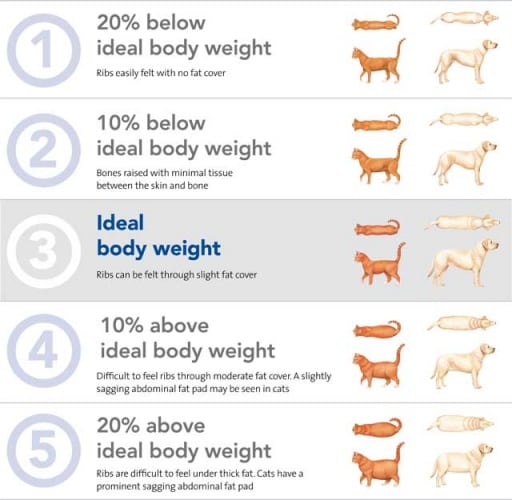Fat Cats And Round Retrievers
Fat Cats and Round Retrievers (Part 1)
Every year around this time gyms across the country see a boost in attendance as people commit (or recommit, or re-re-commit) to sticking to their New Year’s resolution to be healthier. Maybe now is a good time to take a moment to evaluate your pet’s health and fitness as well. In this two part article I’ll go over the basics of pet weight management.
A recent survey found that over half of the dogs and cats in the US are overweight or obese. Pets carrying extra pounds can contribute to multiple health problems. Overweight dogs, for example, are more prone to having arthritis due to the additional stress and strain on their bones and joints. Overweight cats have a higher risk of developing type 2 diabetes that cats that are an appropriate weight. Diabetic cats frequently require owners to give expensive insulin injections twice a day. Helping your pet slim down, if needed, can help them live happier, healthier lives.
“How much should my pet weigh?” is a common question I receive from clients. While a scale can be useful for quantifying a pet’s weight, setting goals, and checking progress, it’s often more helpful to use your eyes to assess a pet’s health status. The body condition score (BCS) is a system used by many veterinarians to asses if a pet is at his or her ideal weight. An example of the five point scale (some veterinarians use a nine point scale) is available below. For a more specific target, discuss your pet’s weight with your veterinarian.

The principles of weight management are pretty much the same for pets as for people. The food a pet eats is broken down in the body and used for energy for daily activities. Any excess calories are stored as fat. This fat is used at a later time when the calories used throughout the day exceed the amount taken in as food. This is known as a “negative energy balance”. A continuous negative energy balance is required for the body to use up the stored fat and lose weight. This negative energy balance is achieved by eating less (taking in fewer calories), being more active (burning more calories), or both.
The first step in weight management is to measure how much you’re feeding your pet. If you always keep the food bowl full (called “free feeding”), or if you estimate (a hasty scoop using a large plastic fast food soda cup twice a day) you may be surprised how many calories your pet is actually taking in. Keep track of how much food is actually disappearing over the course of a few days. Once you’ve measured how much food your dog or cat is eating, compare it to the feeding instructions on the bag. These instructions are a rough guide only, and frequently represent the upper limit of what a healthy dog or cat of a given weight should eat.
Next time I’ll talk about some adjustments you can make to your pet’s food and lifestyle that will help get him or her fit and trim.
 -Dr. Ian Birkbeck
-Dr. Ian Birkbeck
Dr. Birkbeck writes monthly columns for the local publication, “The Viera Voice”. If you have any pet medical questions you’d like to see answered in a future column, you can email them to Dr.Ian@IslandAnimal.com
